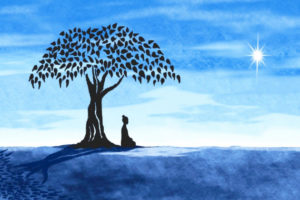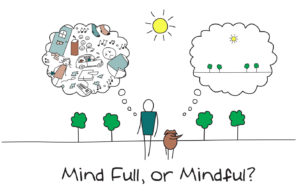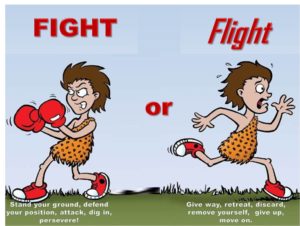My journey in the field of psychology took a turn when I finally decided to try Vipassana- a Buddhist form of meditation. When my sister started persuading me to try out the 10 day Vipassana meditation course, I was adamant. I thought it isn’t for me. It took me three years to go ahead with it. My sister has convinced at least 15 people to try Vipassana. To my knowledge, each one of them thanked her for it because they gained something important. Something changed inside them. I know that change from experience. It was a life changing experience for me and a necessary one!
You can read my sister’s blog for a different perspective. She writes about ‘How to be Happy’. It is inspired by the ideas of Vipassana. Here is the link: http://ayeshamajid.blogspot.com/2015/02/how-to-remain-happy.html
Mindfulness originated in the ideologies of Buddhism- My experience…
In the 10 day course, you learn how to use the technique of Vipassana. It is an ‘insight’ form of meditation. In those 10 days, I learned more about myself than I had in 22 years; in any therapy session, psychology book or Ted talk. I learned that each and everything that our mind senses creates a physical reaction. These physical reactions are emotions. Feelings are what we interpret these reactions as. In other words ‘feelings’ are our own interpretations of our ‘emotions’ which are simple physical reactions to the environment. I always had all this knowledge from psychology but never understood ‘HOW’ this knowledge could be put into practise.
I learned that we either feel elated, depressed or ignore our emotions. We label each and every sensation and try to  make sense of it. Vipassana taught me to observe my emotions instead of labelling it. The first 3 days were about sharpening my concentration skills by observing each and every breath without any judgement. The sensations of inhaling and exhaling are fragile and delicate. If you can focus on each and every breath for many hours in those 3 days, you have kind of been successful in training your mind to concentrate and bring your focus back when your mind wanders. Now I was ready for the main course.
make sense of it. Vipassana taught me to observe my emotions instead of labelling it. The first 3 days were about sharpening my concentration skills by observing each and every breath without any judgement. The sensations of inhaling and exhaling are fragile and delicate. If you can focus on each and every breath for many hours in those 3 days, you have kind of been successful in training your mind to concentrate and bring your focus back when your mind wanders. Now I was ready for the main course.
For more information on Vipassana, please follow this link: http://www.dhamma.org/en/index
Theory into practice
On the fourth day, you learn to observe each and every bodily sensation without any judgment. According to Goenka, you should not get attached or repel these sensations. This process of self-awareness allows you to understand the physical sensations and accept them without any judgment. It familiarises you to your own emotions, reactions and interpretations. When you react to these sensations (mentally or emotionally while meditating), you fuel it and allow your neurons to interpret it as painful or delightful. This strengthens the pathway and builds a pattern in your mind.
We start generalizing these reactions with situations, thoughts, people, things and build strong patterns in our brain. The process of change becomes difficult because we have strengthened our pattern. In essence, we have the choice to interpret our reactions or just observe them as emotions and accept them. When you observe and accept your thought and emotions, your logical brain takes over and your lower brain rests. The catch is that you need to practice Vipassana every day. Yes, EVERYDAY!
Mindfulness in modern language
 Mindfulness in modern language means ‘living in the moment’. Experts have said that there is a gap between stimulus (Our environment) and Response (Our reactions). The practice of being mindful allows us to recognize that gap and ‘Respond’ rather than ‘React’. We can only become aware of that gap if we are ‘living in the moment’. There are many techniques to allow you to live in the moment. The basis for mindfulness in the modern world is Intention, Attention and Awareness.
Mindfulness in modern language means ‘living in the moment’. Experts have said that there is a gap between stimulus (Our environment) and Response (Our reactions). The practice of being mindful allows us to recognize that gap and ‘Respond’ rather than ‘React’. We can only become aware of that gap if we are ‘living in the moment’. There are many techniques to allow you to live in the moment. The basis for mindfulness in the modern world is Intention, Attention and Awareness.
In my view, Vipassana has been the most effective technique for me. Practicing Vipassana has not turned me into a Buddhist or a nun. Buddha means ‘The Enlightened One’. Every human being has the ability to become ‘Buddha’. It takes dedication, determination, and hard work to understand yourself. I have always believed that Wisdom is not about knowing everything about the world, it’s about knowing who you truly are in every moment.
Why Vipassana works in the real world?
- Fight-Flight Response
Vipassana familiarises you with your reactions and sensations. In the real world, when these sensations arise, you  immediately know that you are feeling anxious and you are able to accept these sensations and allow them to pass. When you are calm and don’t allow the fight and flight response to make you panic, you make a better decision, logical decisions in challenging situations
immediately know that you are feeling anxious and you are able to accept these sensations and allow them to pass. When you are calm and don’t allow the fight and flight response to make you panic, you make a better decision, logical decisions in challenging situations
- Intention led Action
When you feel lost and don’t have clarity on situations, you need to meditate for a few minutes and ask yourself ‘What is my true intention?’. You will feel your sensations and your familiarity will tell you whether your intention is a good or bad one. Sometimes, we make wrong choices because we don’t realize our deeper intention. When you become aware of your deeper intention, you know whether it’s worth acting upon in the real world.
- Doer V/S Observer
One of the myths about Vipassana is that it will make you complacent. I have always been a ‘Doer’ and always believed that I need to ‘do something’ about a problem. Vipassana has allowed me to ‘Do something’ when my intentions are pure. It has also made me an observer of my ‘impure’ intentions. Also, when my intentions are pure, I do ym best to make sure my actions are just as pure as my intentions.
- Resilience
 Nothing is permanent. Vipassana has taught me that every moment my sensations are changing. I just need to be aware of them, observe them and allow them to pass. In challenging situations, I allow myself to feel the sensations without labeling it. Not labeling my pain allows me to see it as any neutral situation and makes me resilient. Vipassana has also given me the opportunity to train my mind to believe that ‘everything will pass’. When your mind knows that a situation is not permanent, it automatically ignores the negative and starts focusing on the positives.
Nothing is permanent. Vipassana has taught me that every moment my sensations are changing. I just need to be aware of them, observe them and allow them to pass. In challenging situations, I allow myself to feel the sensations without labeling it. Not labeling my pain allows me to see it as any neutral situation and makes me resilient. Vipassana has also given me the opportunity to train my mind to believe that ‘everything will pass’. When your mind knows that a situation is not permanent, it automatically ignores the negative and starts focusing on the positives.
- Happiness
Happiness is nothing but a label we have created for our sensations or emotions. What makes me ‘happy’ is my  ability to stay connected to my inner self. Knowing my intentions, having clarity on the outcomes of my actions and working hard to fulfill my purpose is how I have started defining ‘happiness’ for myself. If it wasn’t for my practice of Vipassana, I would’ve never known that I could define my own happiness.
ability to stay connected to my inner self. Knowing my intentions, having clarity on the outcomes of my actions and working hard to fulfill my purpose is how I have started defining ‘happiness’ for myself. If it wasn’t for my practice of Vipassana, I would’ve never known that I could define my own happiness.
I have enrolled for the Mindfulness-Based Cognitive Therapy (MBCT) Diploma so that I can translate my knowledge into therapeutic practice for my clients. My intention is to empower them with the ability to become self-aware, to act on their pure intentions and become resilient in challenging situations.
If you have any questions, comments or queries, please do get in touch with me at sarah@sarahmajid.com
Please note that this blog is based on the writer’s interpretations of research, applied knowledge and experience working as a Trainee Sports and Exercise Psychologist.
Sarah Majid
Trainee Sports and Exercise Psychologist
Bristol Academy of Sports
